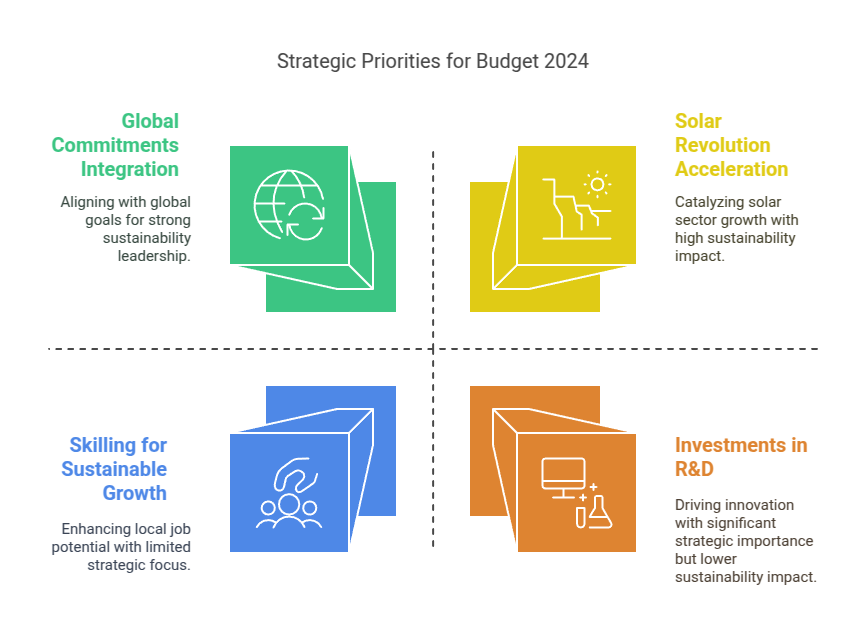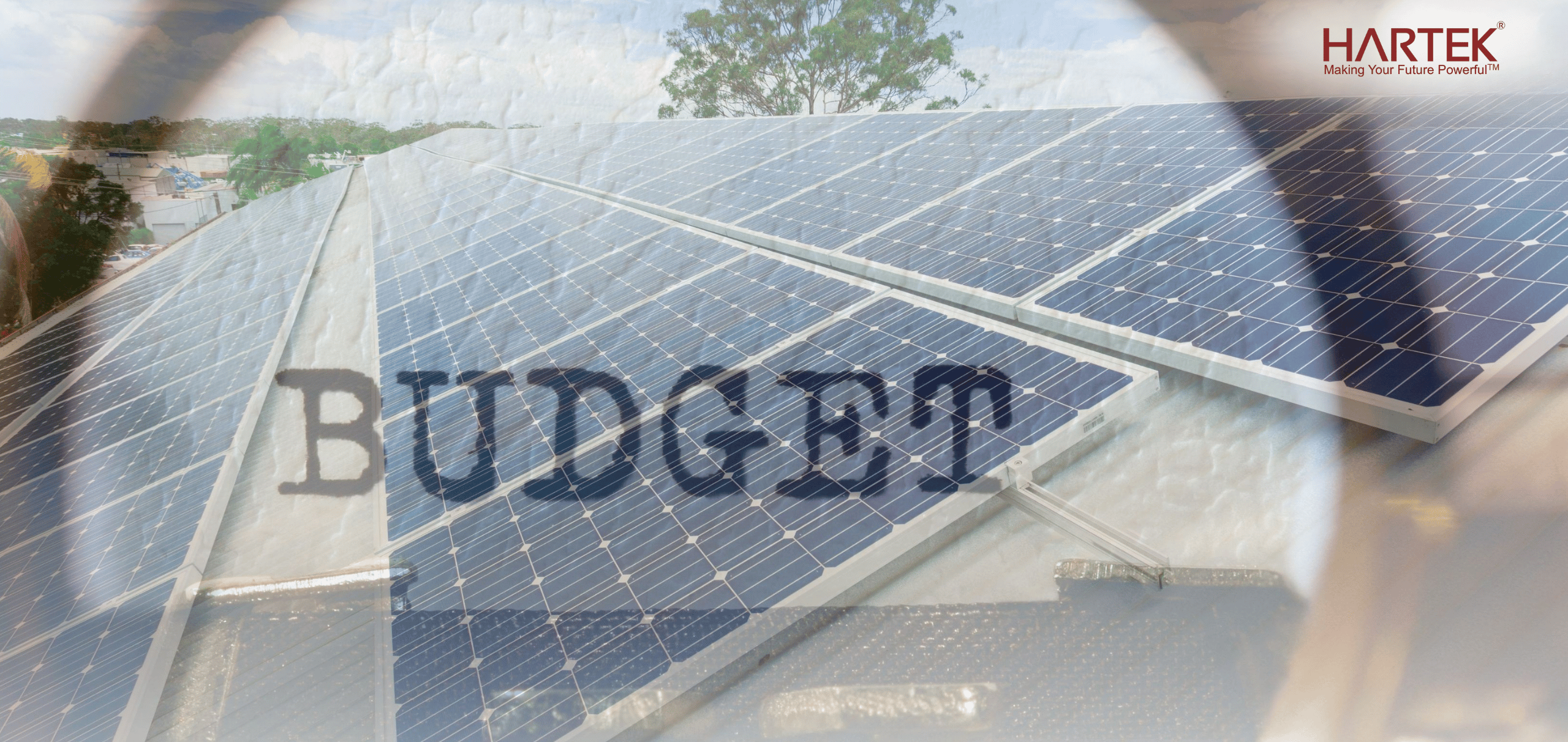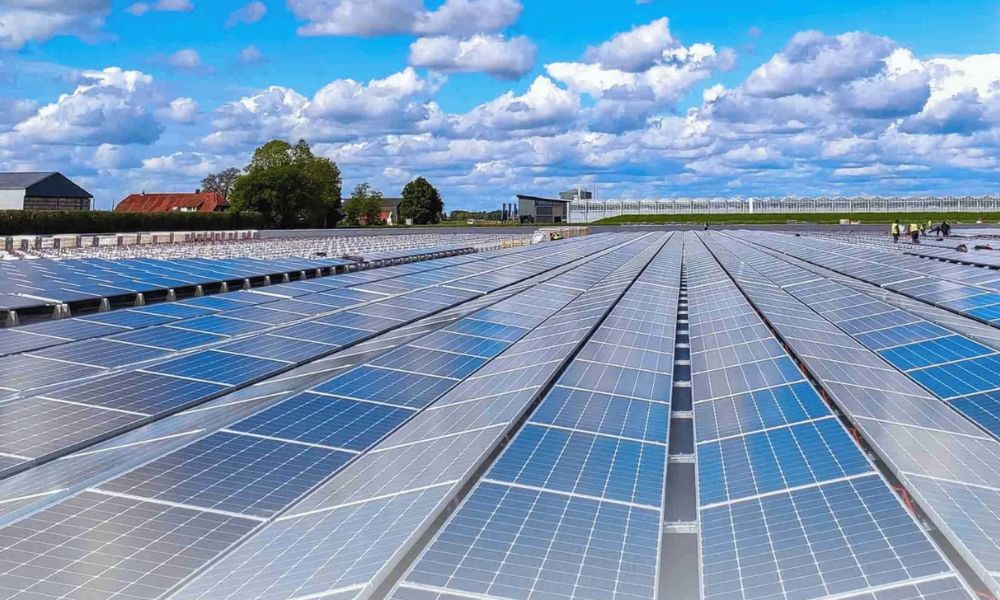As the anticipation builds for Budget 2024, the Indian power sector is poised for significant expectations and hopes. With the past Union Budgets laying the groundwork for sustainable energy growth, the upcoming budget is expected to be a pivotal moment for the industry. Representing Hartek Group, let’s delve into the key expectations that the Indian power sector envisions for Budget 2024.
The Foundation Laid by Previous Budgets
The outcomes of the 2023 Union Budget showcased a clear commitment to green energy and sustainability. Notable allocations for the Green Hydrogen Mission, priority capital investments, and support for interstate transmission systems signalled a proactive approach towards energy transition and security.
Initiatives like facilitating 1 Cr rooftops through Pradhan Mantri Suryoday Yojana and schemes such as PM-KUSUM and Solar Rooftop Phase II have set the stage for a more robust and sustainable power ecosystem. The focus on transmission lines under the Green Energy Corridor Scheme and standards for solar deployment demonstrated a holistic strategy towards a greener grid.
A Glimpse into the Future: Budget 2024 Expectations
1. Solar Revolution Acceleration:
– The budget should act as a catalyst for the solar sector, prioritizing cost reduction, expanded Production-Linked Incentives (PLIs), and investments in energy storage.
– Innovative financing models can be explored to make solar energy more accessible and attractive for investors.
2. Global Commitments Integration:
– Align budget initiatives with recent global commitments seen in G20 and COP28 summits.
– Triple renewable targets by 2030, emphasizing India’s global leadership in clean energy solutions.
3. Skilling for Sustainable Growth:
– Allocate substantial funds towards smart grid development and energy storage initiatives.
– Boosting job potential, this would not only support economic growth but also empower local communities.
4. Investments in Research and Development:
– Unlock efficiencies and cost reductions through strategic R&D investments.
– Foster innovation and technological advancements for a more resilient and sustainable power sector.

Summary of Expectations from Interim Budget 2024
1. Scaling up finance for green projects:
The Interim Budget 2024 is expected to focus on increasing financial support for environmentally sustainable initiatives. This involves allocating more funds towards projects aimed at renewable energy, conservation, and eco-friendly practices.
2. Relaxing norms to improve the investment climate:
The budget could emphasize creating a more favourable investment environment by easing regulatory restrictions. This includes simplifying bureaucratic processes and minimizing barriers to encourage both domestic and foreign investments.
3. Streamlining land acquisition processes and addressing Right of Way issues:
Efforts to simplify and expedite the land acquisition process, and to address Right of Way challenges is being expected by the power industry. This is crucial for the timely implementation of infrastructure projects, reducing delays and ensuring smoother development.
4. Viability Gap Funding for Battery Storage Energy Systems:
The budget should incorporate measures to provide financial support in the form of Viability Gap Funding for projects related to battery storage energy systems. This is aimed at promoting the adoption of advanced energy storage technologies.
5. Capital Subsidy for Smart Grid implementation and other advanced technologies:
The Interim Budget should include proposals for providing capital subsidies to encourage the implementation of Smart Grids and other cutting-edge technologies. This subsidy aims to incentivize the integration of innovative solutions in the energy and infrastructure sectors.
6. Reduction in taxes and duties to promote domestic manufacturing:
The budget should outline a strategy to stimulate domestic manufacturing by reducing taxes and duties. This is intended to make locally produced goods more competitive, fostering economic growth and self-reliance.
7. Boosting R&D and capacity building:
The Interim Budget should prioritize investment in Research and Development (R&D) activities and capacity-building initiatives. This focus aims to enhance innovation, technological advancements, and skill development, contributing to overall economic progress.
In conclusion, considering the interim nature of the upcoming budget, significant reforms are unlikely. Nevertheless, industry observers will closely monitor the budget for signals indicating the government’s commitment to implementing crucial reforms in the near future, possibly in the detailed budget scheduled for later this year.
Frequently Asked Questions
-
What are the key expectations for the Indian power sector in Budget 2024?
The sector expects increased green finance, relaxed investment norms, subsidies for smart grids, and incentives for domestic manufacturing. -
How can Budget 2024 accelerate India’s solar energy growth?
Expanding Production-Linked Incentives (PLIs), reducing costs, and introducing innovative financing models can boost solar adoption. -
Why is Viability Gap Funding important for battery storage?
It helps bridge the cost gap for energy storage projects, making advanced battery solutions more viable and supporting renewable integration. -
How will Budget 2024 support R&D in the power sector?
Increased funding for research in energy storage, grid modernization, and clean technologies will drive innovation and efficiency. -
Will Budget 2024 include tax cuts for domestic power manufacturers?
The industry hopes for tax and duty reductions to promote local manufacturing, making India more self-reliant in power technology.
Share:
Explore More
Keep up-to-date with the most trending news stories that are shaping the world today.







